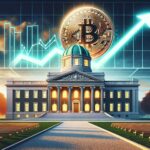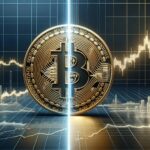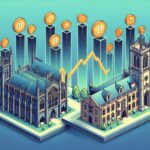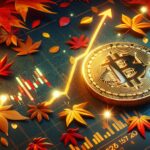OpenSea, once the flagship marketplace for non-fungible tokens (NFTs), is undergoing a significant transformation as it ventures beyond digital collectibles into a comprehensive Web3 ecosystem. This shift reflects its ambition to be a hub for various blockchain-based assets, offering users the ability to trade not only NFTs but also tokens and potentially a wider array of decentralized finance (DeFi) offerings. The recent announcement of the SEA token has generated considerable excitement and curiosity about its role within this evolving platform.
In a recent conversation with CoinDesk, OpenSea’s Chief Marketing Officer, Adam Hollander, emphasized that the marketplace aims to be an inclusive space for both seasoned traders and those new to cryptocurrency. With a focus on user-friendly features, OpenSea intends to facilitate the trading of digital assets across multiple chains seamlessly. The platform, which remains the largest NFT marketplace, is committed to maintaining its core customer base while expanding its capabilities to attract a broader audience.
“We want people to view OpenSea as their Web3 home, which means that you should be able to easily trade any type of asset across any chain or wallet,” said Hollander.
Despite NFT trading volumes not reaching their previous heights, OpenSea reports a resurgence in engagement, particularly following the launch of its new rewards program that saw almost a 400% growth in trading volume. This growth symbolizes the platform’s adaptation to a dynamic and competitive market.
The anticipation surrounding the SEA token, which is projected to be integral to the OpenSea ecosystem, has also sparked discussions within the community. While some users express concerns over newcomers potentially reaping the benefits too easily, Hollander reassured that both new and long-term users will be considered under the platform’s reward strategies, ensuring that all participants feel valued and rewarded for their loyalty and engagement.
“If you’ve been on OpenSea for years and you’ve driven a lot of historical volume, we see you, you are not forgotten,” Hollander stated.
As OpenSea navigates this reinvention phase, it is poised to not only solidify its leadership in the NFT market but also position itself as a versatile trading platform catering to the diverse needs of the growing Web3 community.

OpenSea’s Transition and Future Plans
Key points regarding OpenSea’s pivot and implications for users:
- Web3 Home Concept:
OpenSea aims to position itself as a comprehensive Web3 home, facilitating the trading of various digital assets beyond NFTs, potentially enhancing user engagement.
- Launch of SEA Token:
The anticipated SEA token is expected to be integral to the OpenSea ecosystem, impacting user interaction and loyalty.
- Inclusive Features for All Users:
OpenSea plans to develop user-friendly features catering to both experienced traders and newcomers, which may democratize access to crypto trading.
- Diverse Asset Trading:
The platform is evolving to support various on-chain assets, potentially increasing trading opportunities for users.
- Rewards Program Success:
Implementation of a new rewards program has led to significant growth in user activity, suggesting effective engagement strategies may enhance user experience.
- Focus on Long-term Value:
OpenSea emphasizes the importance of thoughtful token launch to prevent the pitfalls of memecoins, aligning user expectations with sustainable growth.
- Balancing New and Old User Interests:
Plans are in place to ensure that both veteran users and new participants are valued, which may enhance community cohesion and satisfaction.
OpenSea’s Strategic Shift: Navigating Challenges in the Evolving Crypto Landscape
OpenSea, once the frontrunner in the NFT space, is currently undergoing a significant transformation aimed at broadening its services beyond digital collectibles. This pivot positions OpenSea to compete with emerging platforms that are also exploring the integration of NFTs, tokens, and decentralized finance (DeFi) activities. However, as the marketplace evolves, it faces both opportunities and challenges that could impact its user base and broader market dynamics.
Competitive Advantages: OpenSea’s historical dominance in the NFT marketplace gives it a substantial head start. With plans to launch the SEA token soon, the anticipation builds around how this new currency will enhance user engagement and loyalty. OpenSea’s commitment to creating a seamless trading experience across 22 different chains illustrates its ambition to become a comprehensive Web3 home. This approach could cater to both seasoned traders and newcomers, potentially expanding its user base significantly.
Competitive Disadvantages: However, OpenSea’s transition may lead to risks. The delay in the SEA token release raises concerns among users, especially those who feel overlooked in favor of enticing new entrants to the platform. Additionally, the saturated marketplace for crypto trading means OpenSea must continuously innovate to retain its edge. The decline in NFT trading volumes post-peak could also impact its bottom line, making it vital to attract and maintain user interest effectively.
This strategy to cater to diverse users might benefit cryptocurrency enthusiasts seeking a unified platform to trade various assets. Conversely, existing users who feel marginalized by new user incentives may perceive the changes as a threat, creating potential discontent among long-time supporters. OpenSea will need to balance these dynamics carefully to ensure it retains its historic user base while welcoming fresh participants.

















